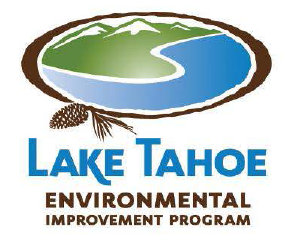Lake Tahoe, Stateline, NV – The Tahoe Regional Planning Agency today voiced its strong support for legislation to reauthorize the Lake Tahoe Restoration Act that has been introduced in Congress by Tahoe’s Senate delegation. Sponsored by U.S. Senator Dean Heller (R-Nevada) along with Harry Reid (D-Nevada), Dianne Feinstein (D-California), and Barbara Boxer (D-California), the Lake Tahoe Restoration Act would authorize up to $415 million in federal funding over 10 years to help continue critical environmental restoration work at Lake Tahoe.
The funding would continue the federal government’s investment in a variety of pressing environmental restoration needs for the nation’s second deepest lake. That includes projects to reduce hazardous fuels to improve forest health and reduce wildfire risk, projects to fight harmful invasive species, projects to reduce stormwater pollution and improve water quality in Tahoe, and continued pursuit of the reintroduction of native Lahontan cutthroat trout.
“Lake Tahoe is a unique national treasure with a strong, broad partnership of people working together every day toward its restoration, with funding coming from all sectors, federal, state, local, and private,” said Joanne S. Marchetta, Executive Director of TRPA. “We are making significant progress, but we must remain vigilant in our pursuit of Lake Tahoe’s restoration and its conservation for future generations to enjoy.”
A reauthorization of the Lake Tahoe Restoration Act would ensure federal funding remains available to leverage with local, state, and private sector funding to continue the Lake Tahoe Environmental Improvement Program (EIP), one of the nation’s most ambitious and successful environmental restoration programs.
“The restoration work completed in Lake Tahoe has not only protected this beautiful place, it’s served as a model for other forests around the country,” said Jeff Marsolais, Forest Supervisor for the Lake Tahoe Basin Management Unit, which manages about three-quarters of the land in the Tahoe Basin. “The original Lake Tahoe Restoration Act allowed the Forest Service and our partners to make substantial progress in reducing wildfire threat, restoring forests, streams, and meadows, improving water quality, and protecting wildlife habitat. The need for those investments continues.”
Working together through the EIP, 50 local, state, federal, and private sector partners have invested in priority projects to improve Tahoe’s environmental health. Nearly 445 projects have been completed since the program’s launch in 1997. Total EIP investments to date represent $576 million in federal funding, $654 million in California funding, $112 million in Nevada funding, $74 million in local government funding, and $323 million in private sector funding.
Tahoe Basin officials said EIP projects have successfully halted the long-running decline in Tahoe’s mid-lake water clarity, improved stormwater collection and treatment on 674 miles of roadways, treated 55,690 acres of forest to reduce hazardous fuels, restored nearly 16,000 acres of wildlife habitat, opened 2,579 feet of additional shoreline for public access, and built 137 miles of bicycle and pedestrian routes.
“Renewed federal support would come at a critical time for Lake Tahoe as other sources of public funds wind down. We are grateful to Senator Heller for his leadership in moving this forward,” said Darcie Goodman Collins, Executive Director of the League to Save Lake Tahoe, a nonprofit group that advocates for Tahoe’s protection, educates and engages the public, and collaborates for science-based solutions to environmental issues facing Tahoe.
Public-private partnerships have become increasingly important in recent years at Lake Tahoe and private contributions are leveraging public-sector investments.
“In our short history, we have seen strong support from the private community for environmental improvement projects that will protect and restore Lake Tahoe,” said Timothy J. Cashman, Board Chair of the Tahoe Fund, a nonprofit formed in 2010 that has raised more than $3 million in private donations for environmental projects. “The Lake Tahoe Restoration Act is critical to the support of these projects and the long-term preservation of Lake Tahoe.”
“The region’s economic base depends directly on the health of the Lake and our natural environment,” said Pete Sonntag, Heavenly Mountain Resort’s Vice President and Chief Operating Officer. “As one of the key implementing partners, the private sector has made significant contributions to the EIP during many years, in terms of time, energy, and financial resources. It is absolutely critical that we continue to work together to ensure a healthy environment and, in turn, a healthy economy.”
Major environmental challenges remain at Lake Tahoe. They include the need to clear more hazardous fuels from Tahoe’s expansive forests and the need to investigate and address troubling declines in nearshore water quality, such as increased algae growth and the spread of harmful aquatic invasive species.
Specifically, the Lake Tahoe Restoration Act as introduced would authorize up to:
· $150 million for hazardous fuels reduction projects to improve forest health and reduce wildfire risk;
· $113 million for projects to reduce stormwater pollution and improve water quality;
· $80 million for other high priority projects;
· $45 million for projects to combat aquatic invasive species;
· $20 million for the reintroduction of native Lahontan cutthroat trout;
· $5 million for performance and accountability tracking;
· And $2 million for land boundary adjustments for improved efficiency of public land management.
The Tahoe Regional Planning Agency leads the cooperative effort to preserve, restore, and enhance the unique natural and human environment of the Lake Tahoe Region, while improving local communities, and people’s interactions with our irreplaceable environment. For additional information, contact Tom Lotshaw, Public Information Officer, at 775-589-5278.



